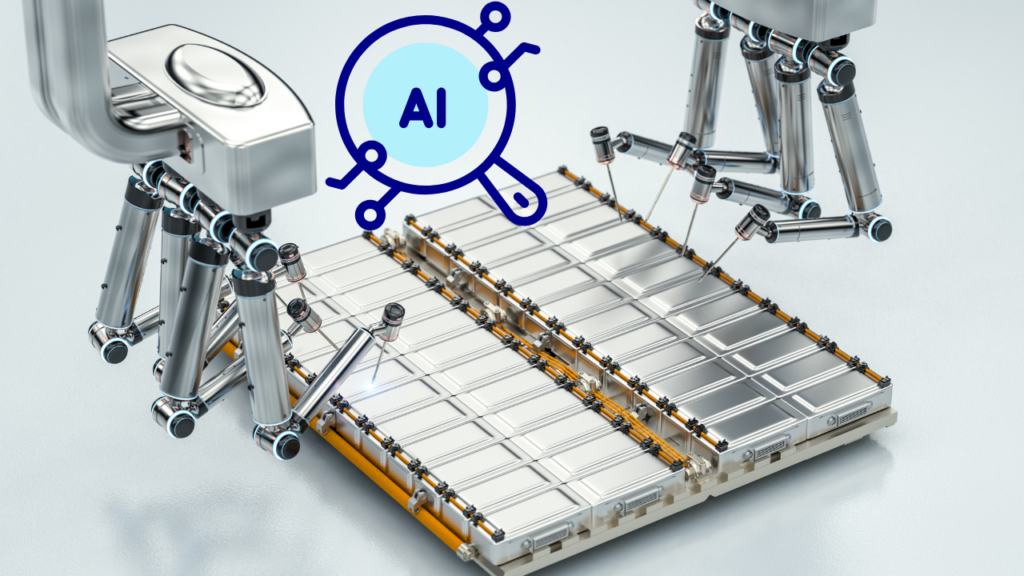Introduction to AI Solutions for Process Automation
Artificial Intelligence (AI) has emerged as a transformative force in the realm of process automation, revolutionizing how businesses operate. By leveraging advanced algorithms and machine learning capabilities, organizations can streamline their workflows, enhance efficiency, and reduce operational costs. The integration of AI into process automation allows for the handling of repetitive tasks with remarkable speed and accuracy, freeing up human resources to focus on more strategic initiatives.
In today’s fast-paced business environment, the demand for agility and responsiveness is paramount. AI solutions can analyze vast amounts of data in real-time, enabling companies to make informed decisions quickly. This capability not only improves productivity but also enhances customer satisfaction by ensuring timely service delivery. Furthermore, AI-driven automation can identify patterns and anomalies in processes, leading to continuous improvement and innovation.
As industries evolve, the adoption of AI technologies is becoming increasingly critical. Companies that embrace these solutions are better positioned to adapt to changing market conditions and consumer demands. From manufacturing to finance, healthcare to retail, AI is reshaping the landscape of process automation, making it an essential component for any organization looking to maintain a competitive edge. The future of work is here, and AI is at the forefront, driving efficiency and effectiveness in ways previously unimaginable.
Benefits of Implementing AI for Process Automation

Implementing AI for process automation brings a multitude of benefits that can significantly enhance operational efficiency and productivity. One of the most notable advantages is increased efficiency. AI systems can perform repetitive tasks much faster than humans, allowing employees to focus on more strategic activities. This shift not only boosts productivity but also improves job satisfaction, as workers can engage in more meaningful work.
Another key benefit is cost reduction. By automating processes, businesses can minimize human error, reduce operational costs, and optimize resource allocation. This leads to substantial savings over time, making AI a financially sound investment.
Moreover, AI enhances data analysis capabilities. With advanced algorithms, AI can analyze vast amounts of data in real-time, providing insights that drive informed decision-making. This capability allows organizations to respond swiftly to market changes and customer needs, thereby gaining a competitive edge.
Additionally, AI can improve customer experience. Automated systems can handle customer inquiries and support requests around the clock, ensuring that clients receive timely assistance. This level of responsiveness fosters customer loyalty and satisfaction.
Finally, AI solutions are highly scalable. As businesses grow, AI systems can easily adapt to increased workloads without the need for significant additional investment. This flexibility ensures that organizations can maintain efficiency and effectiveness even as they expand.
Key AI Technologies for Process Automation

In the realm of process automation, several key AI technologies stand out for their transformative potential. Machine Learning (ML) is one of the most significant, enabling systems to learn from data and improve over time without explicit programming. By analyzing historical data, ML algorithms can identify patterns and make predictions, which is invaluable for optimizing workflows and enhancing decision-making processes.
Natural Language Processing (NLP) is another critical technology, allowing machines to understand and interpret human language. This capability is essential for automating customer service interactions, enabling chatbots to handle inquiries efficiently and effectively. With NLP, businesses can streamline communication and improve customer satisfaction.
Robotic Process Automation (RPA) complements these technologies by automating repetitive tasks across various applications. RPA bots can mimic human actions, such as data entry and processing transactions, freeing up employees to focus on more strategic initiatives. This not only boosts productivity but also reduces the likelihood of human error.
Additionally, Computer Vision plays a vital role in industries where visual data is crucial. By enabling machines to interpret and analyze images and videos, computer vision can automate quality control processes in manufacturing or enhance security through surveillance systems.
Finally, Predictive Analytics leverages historical data to forecast future outcomes, allowing organizations to make proactive decisions. By integrating predictive analytics into their processes, businesses can anticipate market trends, optimize inventory levels, and improve overall operational efficiency.
In summary, the integration of these AI technologies—Machine Learning, Natural Language Processing, Robotic Process Automation, Computer Vision, and Predictive Analytics—creates a robust framework for enhancing process automation. Each technology contributes uniquely, enabling organizations to achieve greater efficiency, accuracy, and innovation in their operations.
Steps to Implement AI Solutions for Process Automation

Implementing AI solutions for process automation requires a structured approach to ensure success and maximize benefits. First, organizations should conduct a thorough assessment of current processes. This involves identifying repetitive tasks that consume significant time and resources. Next, it is essential to define clear objectives for what the AI implementation aims to achieve. These objectives should align with the overall business goals, whether it’s reducing operational costs, improving efficiency, or enhancing customer satisfaction.
Once objectives are established, the next step is to select the right AI technologies. This could involve machine learning, natural language processing, or robotic process automation, depending on the specific needs of the organization. After selecting the technology, it’s crucial to develop a pilot project. This pilot should focus on a specific area of the business to test the AI solution’s effectiveness before a full-scale rollout.
Following the pilot, organizations should gather data and analyze the results. This analysis will provide insights into the AI solution’s performance and highlight any areas for improvement. Based on this feedback, necessary adjustments can be made to optimize the system.
Finally, it’s important to train employees on the new AI tools and processes. This training ensures that staff are equipped to work alongside AI technologies, fostering a culture of collaboration between human intelligence and artificial intelligence. By following these steps, organizations can effectively implement AI solutions for process automation, paving the way for enhanced productivity and innovation.
Case Studies: Successful AI Implementation in Business Processes

Numerous organizations have successfully integrated AI solutions into their business processes, showcasing the transformative power of this technology. One notable example is Siemens, which implemented AI-driven predictive maintenance in its manufacturing plants. By leveraging machine learning algorithms, Siemens was able to analyze equipment data in real-time, significantly reducing downtime and maintenance costs. This proactive approach not only enhanced operational efficiency but also improved product quality.
Another compelling case is that of Bank of America, which introduced its AI-powered virtual assistant, Erica. This innovative tool assists customers with a variety of banking tasks, such as checking balances, making payments, and providing financial advice. By automating these processes, Bank of America has improved customer satisfaction and reduced the workload on human agents, allowing them to focus on more complex inquiries.
In the retail sector, Walmart has harnessed AI for inventory management. By utilizing AI algorithms to predict demand and optimize stock levels, Walmart has minimized waste and ensured that products are available when customers need them. This strategic use of AI not only enhances the shopping experience but also contributes to the company’s bottom line.
These case studies illustrate the diverse applications of AI in process automation across various industries. They highlight how organizations can achieve significant improvements in efficiency, customer satisfaction, and cost savings by embracing AI technologies. As more companies recognize the potential of AI, the trend toward automation is likely to accelerate, paving the way for even more innovative solutions in the future.
Overcoming Challenges in AI-Driven Process Automation

Implementing AI-driven process automation can present a variety of challenges that organizations must navigate to achieve successful outcomes. One of the primary hurdles is the integration of AI technologies with existing systems. Many businesses operate on legacy systems that may not be compatible with modern AI solutions. To address this, companies should conduct a thorough assessment of their current infrastructure and consider gradual integration strategies that allow for seamless transitions.
Another significant challenge is data quality and availability. AI systems rely heavily on data to learn and make decisions. If the data is incomplete, outdated, or poorly structured, it can lead to inaccurate results. Organizations must prioritize data governance, ensuring that they have access to high-quality, relevant data. This may involve investing in data cleaning and management tools to enhance the overall quality of their datasets.
Change management is also a critical factor in the successful implementation of AI solutions. Employees may resist adopting new technologies due to fear of job displacement or a lack of understanding of how AI can enhance their roles. To mitigate this, businesses should focus on comprehensive training programs that educate staff about AI’s benefits and provide them with the necessary skills to work alongside these technologies.
Additionally, organizations must consider the ethical implications of AI in process automation. Issues such as bias in algorithms and data privacy are paramount. Establishing clear ethical guidelines and ensuring transparency in AI decision-making processes can help build trust among stakeholders and mitigate potential backlash.
Finally, securing adequate financial resources is essential for overcoming challenges in AI implementation. Organizations should prepare for initial investments in technology, training, and ongoing maintenance. By developing a clear business case that outlines the long-term benefits of AI-driven process automation, companies can better justify these expenditures to stakeholders and secure the necessary funding.
Future Trends and Innovations in AI Solutions for Process Automation

As businesses continue to embrace AI-driven process automation, several future trends and innovations are poised to reshape the landscape. Hyperautomation is emerging as a key trend, where organizations integrate advanced technologies like AI, machine learning, and robotic process automation (RPA) to automate complex processes. This approach not only enhances efficiency but also enables organizations to achieve greater agility and responsiveness to market changes.
Another significant trend is the rise of AI-powered analytics. By leveraging big data and predictive analytics, companies can gain deeper insights into their operations, allowing for more informed decision-making. This capability will enable businesses to anticipate challenges and optimize processes proactively, rather than reactively.
Moreover, the integration of natural language processing (NLP) is set to revolutionize customer interactions. With advancements in NLP, AI systems will be able to understand and respond to human language more effectively, facilitating smoother communication and enhancing customer experience. This will lead to more personalized services and improved customer satisfaction.
The concept of collaborative AI is also gaining traction. This involves AI systems working alongside human employees, augmenting their capabilities rather than replacing them. Such collaboration can lead to improved productivity and innovation, as humans and machines combine their strengths to tackle complex tasks.
Finally, the focus on ethical AI and transparency will become increasingly important. As organizations implement AI solutions, there will be a growing demand for accountability and fairness in AI decision-making processes. This will not only build trust among stakeholders but also ensure compliance with regulatory standards.
In summary, the future of AI solutions for process automation is bright, characterized by hyperautomation, advanced analytics, enhanced customer interactions, collaborative efforts, and a commitment to ethical practices. These innovations will empower businesses to navigate the complexities of the modern marketplace with confidence and efficiency.



